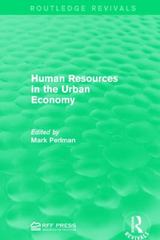Answer the questions attached below.
2. Economic Growth. Suppose that Real GDP is given by the following ag- gregate production function: Y, = A, KO3 NOT a) Suppose that, in a given year, output grows by 3%, capital grows by 2.67% and labour grows by 1%. What is productivity growth? Bonus points to students who can derive the growth accounting formula. Hint: You need to make use of the following approxi- mation for a growth rate in variable X: gx = In X - In X-1 b) Suppose that the savings rate, s, is 0.5, the depreciation rate, d, is 0.09 and population growth, n, is 0.01. Productivity, A, is equal to 2. i. Derive the per capita aggregate production function and plot it on a diagram with k, = ~ on the horizontal axis and y, = # on the vertical axis. ii. Plot savings per capita, M, on the same graph. iii. Plot the amount of investment required to keep capital per capita constant. c) Solve for a steady state equilibrium. In particular, find capital, output, consumption, savings and investment in per capita terms. Show this equilibrium on your graph from part a). d) The golden rule savings rate is the one where consumption per capita is maximized in the steady state. Find the savings rate which is associated with the golden rule consumption level. Is it higher or lower than the savings rate used in part c)? Show the golden rule steady state on your graph. Hint: Consumption per capita in the steady state is given by: c = (1 -$)A You will need to use calculus to find the savings rate that maximizes consumption. Take the derivative with respect to the savings rate and set the first order condition equal to zero. Make use of the product and chain rules for the derivative with respect to s. You do not need to check the second order condition.3. The IS-LMFE Model. Consider a closed eoonomy where desired consump- tion is given by: Cd = 1m + car 1cm? Desired investment is described by: I? = 50 lr Government purchases are equal to G = 2st}. The liquidity function is: MY, 2') = 1m + 0.2? 25an Assume that M = 5m}, P = 1'0 and an"! = H.132. 3} b} 8} Derive the IS Curve for this economy. Plot it on a diagram with Y on the horizontal axis and r on the vertical axis. Derive the LM curve. Plot on your diagram from part a). Solve for the equilibrium levels of r and Y in this economy. What must full employment output be in order for this to be a. general equilibrium? Plot the FE curve on your graph and label the equilibrium. Show the effects of an expansionary scal policy by deriving the IS Curve in the case where {3\" = 3013. Plot it on your graph. What are the new levels for r and 1"? Is the economy in a. long run equilibrium? What is another example of a factor that may shift the IS Curve other than scal policy? Be sure to note the direction the IS Curve will shift. Show the elfects of a contractionary monetary policy by deriving the LM Curve in the case where M\" = 5!]. Plot it on your graph. What are the new levels for r and Y? What is another example of a factor that may shift the LM Curve other than the nominal money supply? Be sure to note the direction the LM ICurve will shift. In this question, work with the original IS curve from part a]. Question 2: Consider a good that can be produced using the technology: C(q) = 1600 + 10q + 4q2 (a) Find and show in a diagram the Marginal Cost (MC), Average Variable Cost (AVC) and Average Total Cost (AC) for this technology. In your diagram identify the Short Run (SR) and the Long Run (LR) supply curve of a perfectly competitive firm using this technology, assuming that the fixed cost is sunk in the SR and avoidable in the LR. (b) Explain for what output levels the technology shows increasing returns to scale and for which decreasing returns to scale. (c) What does it mean for the market for this good to be a natural monopoly? For what outputs is that the case? (d) Suppose that the inverse demand function for this good is given by P(Q) = 240 - 2Q Explain whether the market is a natural monopoly or not (e) Suppose that there are n = 16 firms perfectly competitive firms able to use the technology in (a). Find the firm and industry short-run and long-run supply curve. (f) Suppose that the demand for the good is given by Q (p) = 1250 - 3p. Find the short run perfectly competitive equilibrium. Do you expect firms to be entering or exiting the market? (g) What is the long run perfectly competitive equilibrium in the market









